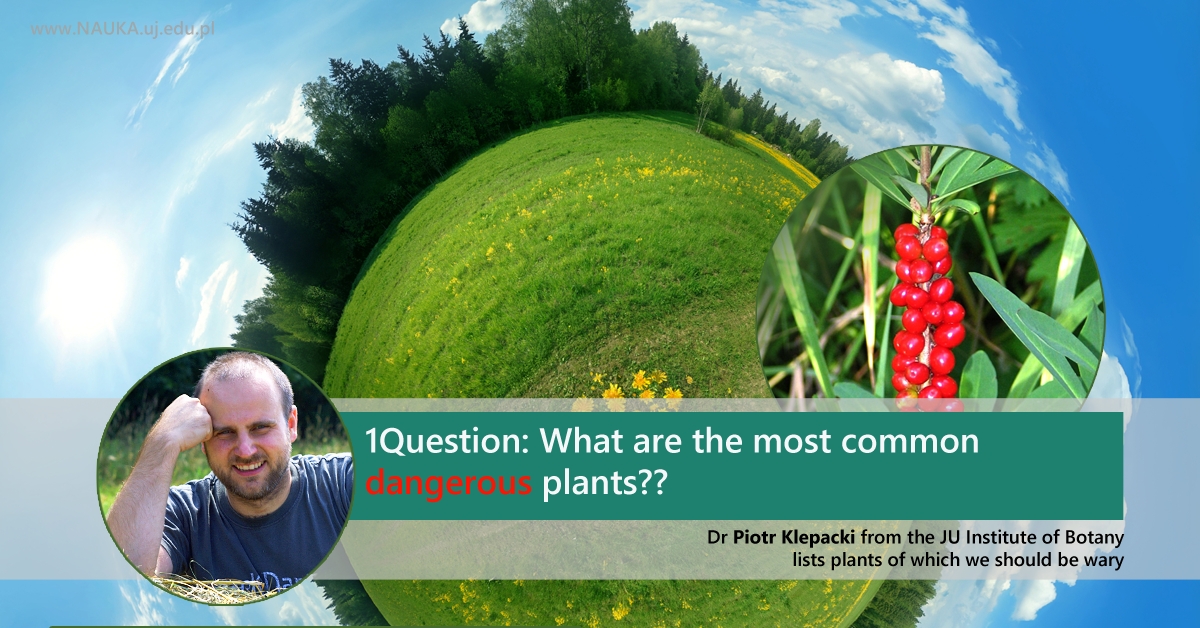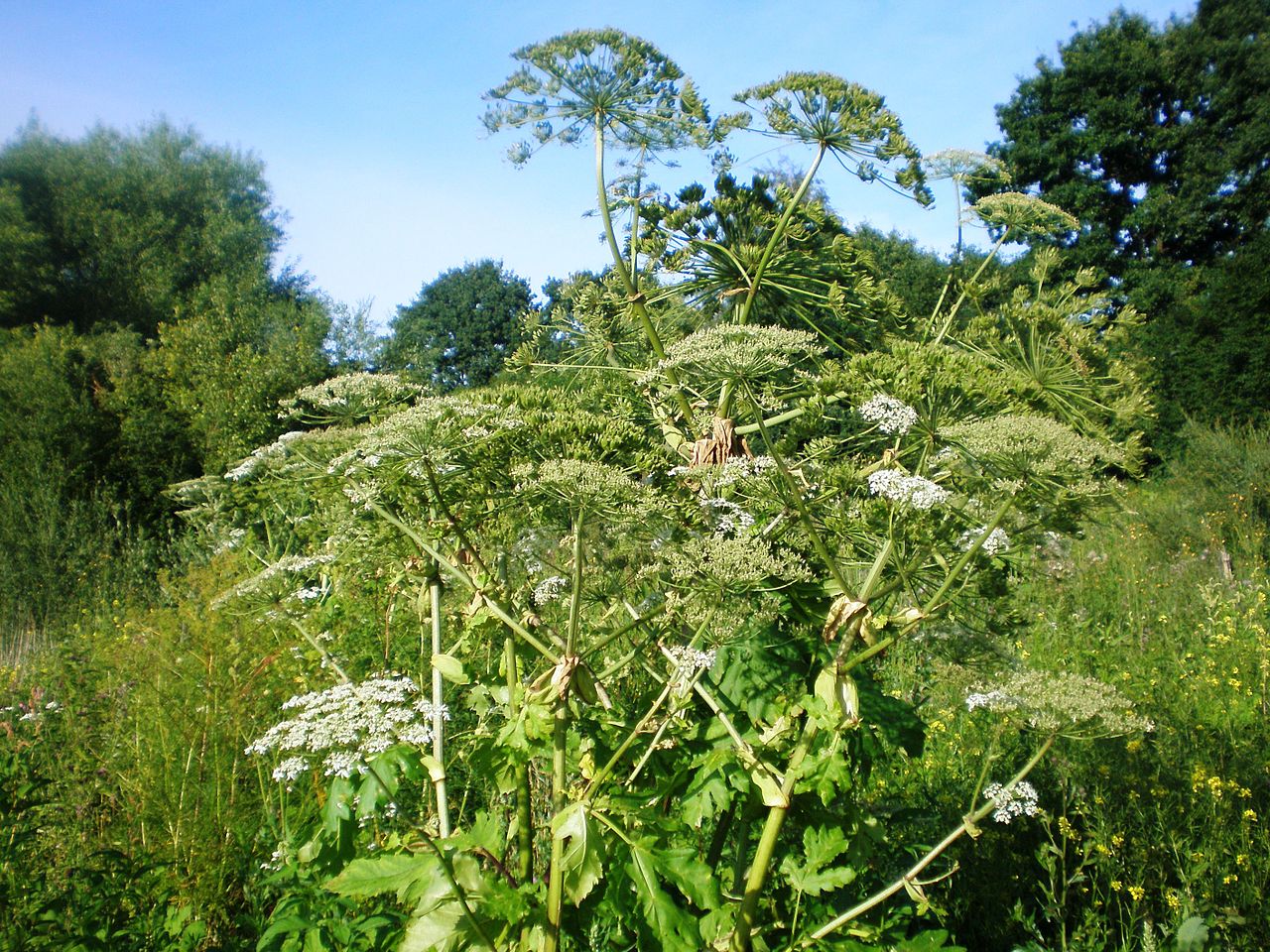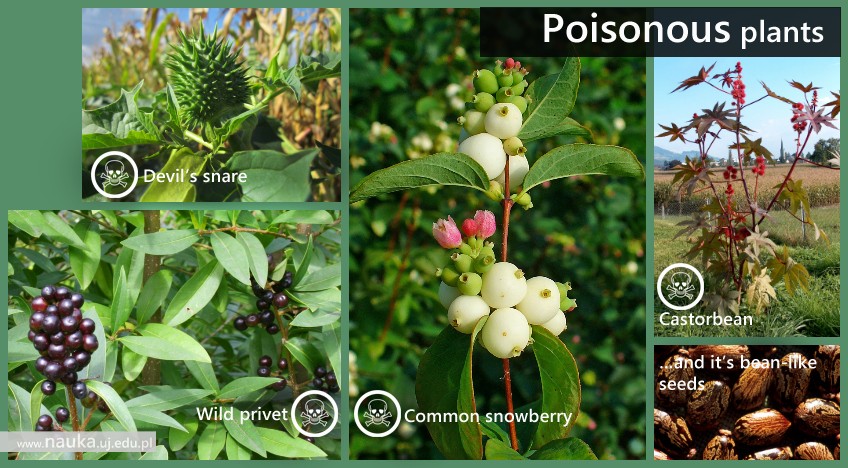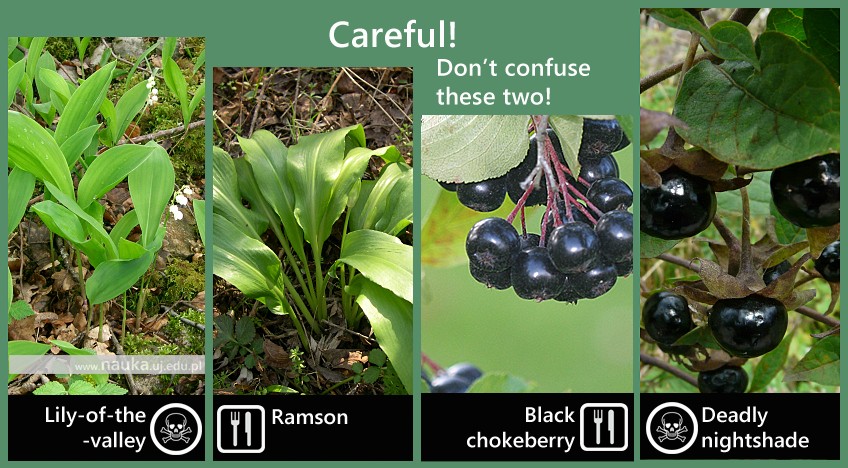
Ticks, flies, mosquitoes, wasps – we know these unpleasant companions all too well. They often disturb us when we're trying to take a relaxing walk through a forest or garden. Plants usually seem to be less of a threat, but are they really? Dr Piotr Klepacki from the JU Institute of Botany describes the most common exceptions to that rule.
1Question is a series of articles by the University Marketing science communication unit, in which specialists and experts from various fields briefly discuss interesting issues related to the world, civilisation, culture, biology, history, and many more.
When we decide to go camping or visit the countryside, it's a good idea to learn more about harmful plants. It's an even better idea to be well informed about the types of dangerous plants which tend to grow closely to our homes, especially if we have children.
Wild plants
One of the best known dangerous plants in Poland, chiefly because of recent news stories, is Sosnowsky's hogweed (Heracleum sosnowskyi). It's a large dill-looking plant belonging to the same family as carrot, celery and lovage. It's originally native to Caucasus, much like it's cousin, the giant hogweed (Heracleum mantegazzianum). A highly invasive plant, it spreads very quickly thanks to massive seed production and often grows in large groups, particularly near rivers, ditches, and wet meadows.

Pictured: poisonous red berries of the February daphne (Daphne mezereum). Photograph by Vali M. Pohjonen, CC BY-SA via Wikimedia Commons.
Any contact between our skin and Sosnowsky's hogweed results in painful burns. Its victims are usually children, fascinated by the plant's enormous size. However, adults often fall prey to the weed's toxic sap as well – it happens when they try to remove it themselves without proper protection or training. It's advised to alert the local authorities of the weed's presence instead of attempting to get rid of them on your own. What is interesting is the fact that both of the aforementioned species of hogweed are edible – native inhabitants of Caucasus eat their leaves and shoots. It's no wonder, then, that Sosnowsky's hogweed was brought to Poland as a promising type of fodder (giant hogweed has no uses, aside from its decorative properties). Both hogweeds bloom in May and June, sprouting spectacular white umbels.
Although hogweed is a well-known threat, the same cannot be said about other toxic plants. Some of them are generally edible, but poisonous at some stages of their development. One such plant is the elderberry (Sambucus nigra), a common blossoming shrub. It's very resistant to pollution and unfavourable soil, hence it's frequently planted in urban areas. Elderberry is edible and has medicinal properties. Its flowers possess a subtle honey scent and are used to brew juice or as filling in crepes. Its berries can be used to make syrups – remedies for cold and flu. However, it's extremely important to remember that only fully ripe berries are safe to eat. In their unripe state, they are poisonous.

For several years now, ramson (Allium ursinum) has been gaining more and more popularity. This wild plant has broad leaves and a very distinct smell. It's mostly found in wet deciduous forests, usually in large groups. A lot of Polish people like to plant it in their gardens. Though the plant itself is edible and not harmful in any way, it may pose a threat to those with less experience with plants in general, as it can be confused with the lily-of-the-valley (Convallaria majaris), the young leaves of which are very similar to those of ramson (even though they are devoid of the garlicky smell). Since both plants flower at the later stage of their development, the inexperienced can only tell them apart by their smell. Lilies-of-the-valley are poisonous in their entirety, and if you put them in a vase, you also have to watch out for the water in which they were immersed.
Garden plants
Thujas are the most common decorative plants in our gardens. Their leaves are poisonous, but thankfully, rarely does anyone eat them. Unfortunately, other plants with tasty-looking seeds and berries are a much bigger problem.
One of the most deadly species is a perennial plant called the castorbean (Ricinus communis). The most frequently cultivated kind has claret-coloured leaves. The whole plant is poisonous, but its seeds are especially dangerous, even more so because they resemble shiny marble beans, which makes them attractive for children.
Another universally found plant to be wary of is the wild privet (Ligustrum vulgare). Its characteristic leaves are very easy to split in two and are often picked by children and adults alike. In summer, it produces pleasantly-smelling white flowers, which turn into small clusters of round black berries. The whole plant is poisonous. Common snowberry (Symphoricarpos albus) is yet another plant that can often be seen in public spaces. In late summer, it produces white spongy fruits. Children like to throw them around or squash them with their feet, because they make a faint cracking sound. Unfortunately, they are poisonous. Box, a shrub planted in classical gardens and in interior pots of restaurants and shopping malls, frequently pruned to help it achieve the desired shape, is also poisonous.

Poisonous plants. Licence: CC BY-SA. Photos: Frank Vincentz (wild privet), H. Zell (common snowberry), Andreas Früh (castorbean – plant), Schnobby (castorbean – seeds). Photo of Devil's snare licenced under Public Domain.
Healthy lifestyle aficionados, attentively observing the latest food crazes, are sure to know Chinese boxthorn (Lycium chinese), commercially known as the goji berry. Its cousin, Chinese wolfberry (Lycium barbarum), has been known in Poland for many years. If you're planning to cultivate your own boxthorns, plant them in warm and sunny places. Be mindful, however, that only fully ripe berries are good to eat – if they're picked ahead of their time, they're poisonous. As a general rule, it's worth to be careful when it comes to fruits from plants that are not native to our biome.
The boxthorn belongs to the Solanaceae family, which contains many edible plants, like potatoes or tomatoes. Nonetheless, when you place potatoes in direct sunlight, they will become green – and poisonous. Although it is a well-known fact, in the time of thoroughly rinsed vegetables displayed in supermarkets, potatoes tend to get green a little bit faster. Paradoxically, cleaner doesn't always mean healthier.
Lastly, we have to mention people who ingest toxic plants on purpose. It's a fairly large group of people who favour more natural psychoactive substances over chemically produced ones (though those natural narcotics are very often "enhanced" with chemicals). They know that hallucinogenic plants are often poisonous, but they scour their neighbourhoods, searching for deadly nightshade (Atropa belladonna) or Devil's snare (Datura stramonium). They also settle for more easily accessible substances – copious amounts of nutmeg, though hard to swallow, have an effect on some people.
So if your teenage child (or perhaps a 40-year old friend) suddenly starts to buy a lot of spices or search for seeds in suspicious bushes, you should remind them of a quote by Paracelsus: "Dosis facit veneum" – the dose makes a poison. In other words, it's easy to overdose.

Edibles easy to confuse with toxic plants. Licence: CC BY-SA. Photos: PRA, Archenzo Cortenova, Tappinem.
Naturally, there are many other lethally poisonous plants, so we should never attempt to eat anything we don't know. We should be careful even in the cases when we think we know the plant's properties. Regrettably, when it comes to plants, there is no general rule like "black is safe to eat, red is not". There are delicious red raspberries and strawberries, and then there are the dangerous berries of February daphne (Daphne mezereum). Sweet common bilberries (Vaccinium myrtillus) may grow just a five minutes' walk away from juicy and shiny, but highly poisonous deadly nightshade fruits. Children in particular are susceptible to the treacherous beauty of colours and shapes. They can make them a part of their games and eat them by accident or on purpose.
One last thing: all plants pose a certain animal-related risk. Although it's now less common to encounter livestock on a daily basis, we should not put blades of grass in our mouths, since they can be ridden with parasite eggs and bacteria.





